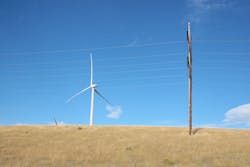Idaho Power’s Long-range Plan Focuses on Reliable, Affordable, Clean Energy
Idaho Power’s latest long-term energy plan accelerates the company’s move away from coal-fired energy while looking to transmission, renewable energy, battery storage and energy efficiency to continue providing customers reliable, affordable electricity.
This is the company’s 15th Integrated Resource Plan (IRP) and the first that does not identify a need for new carbon-emitting resources. The utility submits an IRP to state regulators every two years, detailing plans for serving customers over the next 20 years.
Under the plan, the company will phase out its remaining interest in coal-fired power plants by the end of 2028, two years earlier than projected in the 2019 IRP.
Idaho Power develops the IRP with the assistance of its customers and other interest groups through an advisory panel — the Integrated Resource Plan Advisory Council (IRPAC). The IRPAC includes members of the environmental community, major industrial customers, irrigation representatives, state legislators, public utility commission staff and other interested parties.
“This plan is a major step toward ensuring we can continue serving our customers with the reliable, affordable energy they need while moving toward our goal of providing 100% clean energy by 2045,” said Mitch Colburn, vice-president of planning, engineering and construction. “It represents nearly a year of hard work by a large number of Idaho Power employees as well as the dedicated effort of the IRPAC members who donate their time and expertise toward making our plan better.”
Idaho Power serves more than 600,000 customers in southern Idaho and eastern Oregon. That number is projected to increase to 847,000 by 2040. Electricity demand is expected to increase an average of 1.4% per year during that period.
The 20-year plan includes the addition of 3790 MW from new clean resources including wind and solar, as well as storage technologies, and a variety of incremental demand-side management resource additions totaling 540 MW. Demand-side management helps to decrease energy use through energy efficiency measures and programs that reduce energy use during periods of high demand.
To meet its near-term resource needs, the company has asked developers to submit proposals for resources that can come online in 2023, 2024 and 2025. The Boardman to Hemingway transmission line is scheduled to come online in 2026, enabling the company to import energy from the Pacific Northwest, especially in the summer when demand is greatest.
The public can review and comment on the plan through either the Idaho Public Utilities Commission (case IPC-E-21-43) or Public Utility Commission of Oregon (docket LC 78). The IRP is available at idahopower.com/irp.
